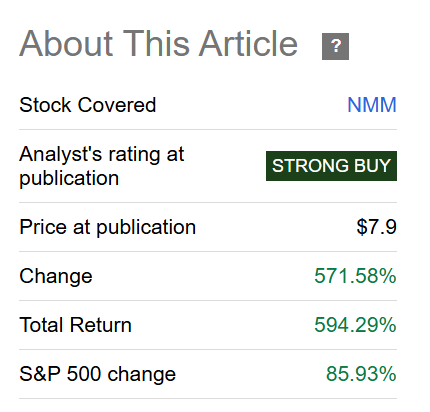1/ ESG will be a huge tailwind for commodity trade in the coming years. Higher quality ores take significantly less energy to smelt. High quality supplies from further afield will replace lower quality supplies closer to production centers requiring far more #drybulk ton miles 

2/ Using steel making as a case study we can see this effect with the 2 major steel making ingredients: iron ore and met coal. With capital markets closing off to coal investments, only the highest quality met coal projects will attract capital and prices will remain elevated: 

3/ High coal prices combined with existing and impending carbon taxes will incentivize the highest quality iron ore supplies which use less coal. The market is already pricing this in with futures for high grade price premiums widening significantly in future years: 

4/ There are very few deposits of the highest grade 65%+ iron ores in the world including Brazil and Simandou in Guinea. Long haul trade from these 2 locations will supplant low quality domestic supplies in major steel producers like China and India news.com.au/finance/econom…
5/ This is not a phenomenon unique to steel making. The largest source of new Bauxite (aluminum ore) production in the world has been coming from Guinea in West Africa as well. The same can be said for many other mined commodities. 

6/ As new high quality metal ore supplies are brought online to meet the changing economics of energy and carbon emissions they will overwhelmingly be sourced from the Atlantic and shipped to goods production and population centers in Asia on ultra long haul trades.
7/ Due to the distance traveled, for every unit of trade growth there will be a disproportionately larger amount of new ship capacity required to transport it. Although lagging in recent years due to trade tensions, we see this phenomena coming back into full force this year. 

8/ #drybulk shipping is a very cyclical industry. A decade of bust led to current massive underinvestment with the new ship orderbook at historic lows. ESG tailwinds are just one more thing ensuring bulk transport demand will exceed new ship capacity in the coming years. 

Some better charts showing that despite trade to GDP multipliers slowing in recent years, dry bulk ton miles continue to grow at a multiple of tons shipped. Hard to find 2021 actuals but the effect is huge this year. 



Extremely high iron ore prices have caused restarts of significant Chinese iron ore production in recent years up 100mt/yr from the lows. More seaborne supply will bring the price down to unprofitable levels for Chinese producers causing further rotation to long haul imports. 

Simandou "2-billion-tonne deposit could churn out 200 million tpy" of high quality ore. Thats a lot of capesizes! 

• • •
Missing some Tweet in this thread? You can try to
force a refresh










